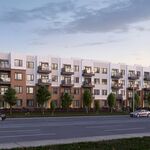wild goose chase
Active Member
The talk of gentrification of course is focused on Old Toronto, but I wonder, is there or can there be any kind of gentrification, as commonly defined, in the other boroughs?
While I doubt somewhere like Jane and Finch is going to get the Regent Park treatment any time soon or that any wealthier people (wherever they come from, be it downtowners priced out by even wealthier downtowners, or say people from outside Toronto) are clamouring to take over Ford Nation, I do wonder to what extent you can even say gentrification reaches into the inner suburbs. Have any inner suburbs gone from middle class to working class and then back to middle class or higher again?
Will transit-oriented growth (which I sort of see a bit of in parts of North York where I noticed old buildings come down as condos go up along say the Sheppard line) cause some amount of displacement of and pricing out of locals that people refer to as gentrification?
While I doubt somewhere like Jane and Finch is going to get the Regent Park treatment any time soon or that any wealthier people (wherever they come from, be it downtowners priced out by even wealthier downtowners, or say people from outside Toronto) are clamouring to take over Ford Nation, I do wonder to what extent you can even say gentrification reaches into the inner suburbs. Have any inner suburbs gone from middle class to working class and then back to middle class or higher again?
Will transit-oriented growth (which I sort of see a bit of in parts of North York where I noticed old buildings come down as condos go up along say the Sheppard line) cause some amount of displacement of and pricing out of locals that people refer to as gentrification?




